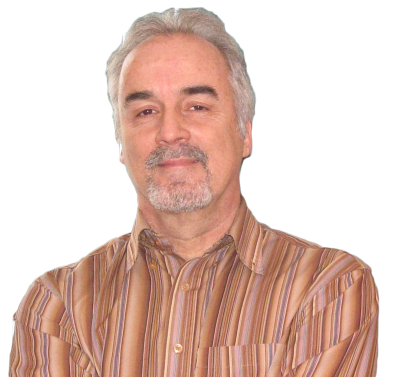Why PMs love to visit PI: Celebrating the 25th anniversary of the Perimeter Institute for Theoretical Physics
 Paul Dufour is a senior fellow at the Institute for Science, Society and Policy at the University of Ottawa.
Paul Dufour is a senior fellow at the Institute for Science, Society and Policy at the University of Ottawa.
“As we develop science policy we need to look beyond the short-term context, beyond the research that looks immediately promising. If we’re blinded by the urgency of our problems, we will go the wrong way. We’ll be investing in horses, carriages, and cleaning up the streets instead of fostering the research that can give rise to an idea or technology that is going to change the world.” – Mike Lazaridis, The Power of Ideas, 2012
For over two decades, Canada’s prime ministers have had a thing with the Perimeter Institute for Theoretical Physics (PI) at Waterloo, this year celebrating its 25th anniversary after its launch in 2000.
Founded by Turkish-born Mike Lazaridis, a student of electrical engineering at the University of Waterloo and co-founder of Research in Motion (BlackBerry), Lazaridis donated $170 million to PI, along with other philanthropic support to the Institute for Quantum Computing and, more recently, to establish the Quantum Valley Ideas Lab.
PI is a cool place for nerdy people, with chalkboards everywhere, global outreach and training with students, fab talks and events, and where you can mix easily with theoretical physicists, Nobel laureates, and other researchers.
The wondrous Stephen Hawking was of course a visitor several times and lent his name to a research facility there as well as giving special lectures.
On June 14, 2002, PI's groundbreaking ceremony was attended by the Prime Minister Jean Chretien along with Ontario’s Deputy Premier Elizabeth Witmer.
In October 2004, then Prime Minister Paul Martin was invited to officially open the PI. He had been convinced through numerous visits to Ottawa by the PI board and its director Howard Burton (see his marvellous history: First Principles: The Crazy Business of Doing Serious Science) that the Canadian government needed to get on board with financial support along with the provincial government and other donors.
Martin brought with him an entourage of politicians from Ottawa, along with his newly appointed National Science Advisor, Dr. Arthur Carty.
Martin’s remarks that evening of October 1 were prescient as he opened by saying: ‘I don’t think there’s any doubt that Perimeter is going to have an influence on the world for eons to come and that’s a wonderful thing.”
He went on to note that the case for the funding partnership from the federal and provincial governments had been a complex one given the unique nature of the PI, but said how pleased he was that it went through.
In his remarks, Martin underlined the importance of supporting basic research and noted that it is the responsibility of a generation to take on an exponentially increasing body of knowledge and pass it onto the generations that follow.
The Prime Minister underscored that fundamentally it is the role of government to ensure that basic research is done and that: “We fail the generations that follow if we don't do that.”
More critically, he argued that: “We also understand that the way in which a country's sovereignty is exercised has an enormous amount to do with the quality of life that its people will enjoy and whether in fact this is where its young will realize their dreams.
“I don’t believe that sovereignty in the future, not that long after we’ve taken care of some of the current problems, is going to be exercised by great armies. I think it’s going to be exercised by the capacity of the country to demonstrate to the world that it’s brain power, that its ability to look into the future is as great, if not greater, than any others.
“And I think that the Perimeter Institute stands for the kind of Canada that we want to build and it certainly stands for my definition of what sovereignty is all about.”
More PMs come to the PI
Fast forward to May 17 2007 when another Prime Minister – Stephen Harper – chose the PI as the locale for the announcement of his first (of two) federal science and technology strategies. He noted that his new government was charting a new direction, one that linked the competitive energy of Canada’s entrepreneurs to the creative genius of our scientists.
The federal report – Mobilizing Science and Technology to Canada’s Advantage – outlined a comprehensive plan to make Canada a leader in S&T, research and innovation. It argued the following:
- Canada must translate knowledge into commercial applications that generate wealth for Canadians and support the quality of life we all want in order to create an Entrepreneurial Advantage.
- Canadians must be positioned at the leading edge of the important developments that generate health, environmental, societal, and economic benefits in order to create a Knowledge Advantage.
- Canada must be a magnet for the highly skilled people we need to thrive in the modern global economy with the best-educated, most-skilled, and most flexible workforce in the world in order to create a People Advantage.
Harper, in his remarks, noted that Canada’s standard of living is at risk because private investment in research and development, university enrolment in scientific fields and productivity have fallen behind global competitors.
As he stated, “If we do not improve, Canada will become a poorer, weaker country.” And he stressed that this would not happen on his watch.
Harper also used the PI on another occasion in 2010 to announce funding support for several AIMS networks – African Institutes for Mathematical Sciences – driven in part by the vision of PI's then-director, the South African-born Neil Turok, and also supported by Canada's International Development Research Centre.
Fast forward once more and another Prime Minister – Justin Trudeau – visited PI in April 2016.
When a journalist jokingly asked the Prime Minister to explain quantum computing, the trained educator called the bluff with a clear explanation. Trudeau noted that the work being done at Perimeter and in Canada’s “Quantum Valley” was vital to the future of the country and the world. Following a recording from Stephen Hawking greeting the Prime Minister, Trudeau also announced the federal government’s commitment to supporting fundamental scientific research.
As Trudeau noted, "Without the work of theoretical physicists, like the ones who are researching, teaching and training here at the Perimeter Institute, we wouldn’t have many of the things that improve our daily lives.”
And today, with another Prime Minister just elected, and with a renewed focus on economic growth and enhanced productivity for the country, one can only hope that Mark Carney will follow in the footsteps of his predecessors. He has an opportunity to take the example of this unique, pathbreaking facility with its global networks engineered by the vision of an entrepreneur who believed in the next big thing, and invest meaningfully in our future to make Canada a global hub for emerging science, technology and research talent.
R$
| Organizations: | |
| People: | |
| Topics: |
Events For Leaders in
Science, Tech, Innovation, and Policy
Discuss and learn from those in the know at our virtual and in-person events.
See Upcoming Events
You have 0 free articles remaining.
Don't miss out - start your free trial today.
Start your FREE trial Already a member? Log in
By using this website, you agree to our use of cookies. We use cookies to provide you with a great experience and to help our website run effectively in accordance with our Privacy Policy and Terms of Service.




